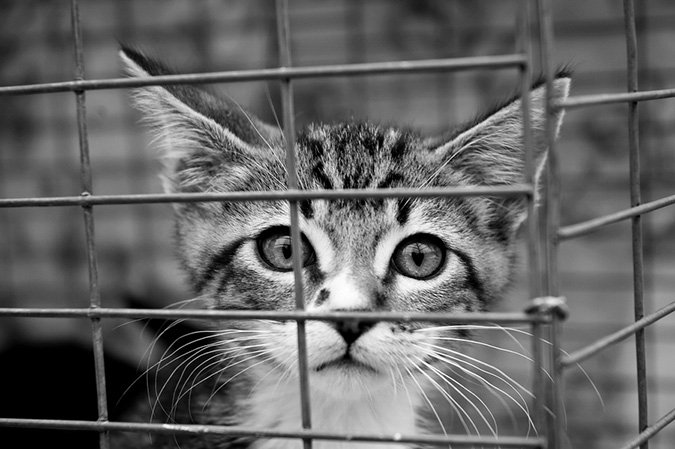Come spring and fall, animal shelters across the country are flooded with newborn kittens often in need of round-the-clock care to help them survive, thrive and eventually be adopted. As adorable as shelter kittens may appear, how can you tell if they’re healthy?
For starters, be patient. Wait to adopt until a kitten is at least 8 weeks old or better yet between 10 and 12 weeks old. “This age allows for the queen [the mother cat] to teach her kittens and allows the siblings to grow together and play so that they develop social skills and hunting skills,” says Holly Putnam, DVM, a faculty clinician in Maddie’s Shelter Medicine Program at Cornell University College of Veterinary Medicine.
Wait for Weaning.
By 8 weeks, most kittens have been weaned. They’re usually healthy enough to be spayed or neutered, and to receive the initial rounds of deworming and vaccinations against infectious diseases to bolster their developing immune systems.
The next step is an assessment of the kitten you’re considering, says Leni Kaplan, DVM, MS, a lecturer in the Community Practice Service at Cornell. While shelter staff veterinarians routinely conduct exams of adoptable kittens, it can be easy in the rush of kitten season for signs to be overlooked or to develop after an exam.
Observe the kitten you want to adopt to make sure that he:
Bigstock

– Is not too thin for his age. “Poor weight gain may be a sign of underlying health problems,” Dr. Kaplan says. “Healthy kittens provided with good nutrition should gain weight as they grow.”
– Is free of parasites — no fleas, ticks, lice or tapeworms.
– Has a clean, well-groomed coat. A dirty or matted coat could indicate that illness is preventing him from grooming himself.
– Shows no signs of a runny nose, watery eyes or sneezing. These could be signs of upper respiratory disease, which commonly affects shelter cats.
– Displays a playful curiosity and desire to interact with you. If he’s lethargic, he could have a virus, parasites or another health problem.
Be alert to other warning signs, such as diarrhea in the litter box or shelter cage and a full bowl of untouched food in the cage. “They could indicate an underlying illness, nausea, oral pain or dental problems,” Dr. Kaplan says.
Spend time observing a group of kittens before interacting with them. “Watching the kittens will give you an idea of their temperaments,” says Dr. Kaplan. “Are they wide-eyed and curious? Ears perked? Sociable and playing?”
When you pick up a kitten, take note of his response to being handled. Ideal adoption candidates are relaxed and will purr and even snuggle with you. Kittens who lack adequate socialization may extend their claws, struggle to wrestle free and even yowl.
“Nervous, feral, poorly socialized or very independent cats and kittens may have squinty eyes, flattened ears and may not be receptive to being social,” Dr. Kaplan adds.
Don’t hesitate to interview shelter staff members about how they care for the kittens. After all, you’re about to adopt a feline who may spend the next 12 to 20 years with you. Among the questions to ask:
– Has the kitten been handled, preferably for at least 15 minutes each day?
– Does the kitten approach people or stand away?
– What has been the behavior of the queen and the tom (the kitten’s parents)?
– Does the kitten easily use the litter box?
– Has the kitten been adequately exposed to a wide range of people, both adults and children? What has been the kitten’s reaction?
Once you have decided on a kitten, invest the time to kitten-proof your home and obtain supplies before taking him home. Inspect each room and identify potential dangers. “Make sure kittens cannot get into any small spaces where they cannot be retrieved,” says Dr. Kaplan. “Keep kittens away from electric and computer cords, and things that they may chew on or try to climb.”
If you already have another cat, proceed with the introductions slowly. For the first few days, keep the kitten separated in a bathroom or laundry room with all the needed amenities — and the food bowl away from the litter box. Allow your resident cat to sniff under the door. Then rub a damp cloth on your resident cat and rub that cloth on your kitten, then back on the resident cat. The exchange of scents will ease their familiarity. Make their first face-to-face meeting at mealtime.
After a week in his new home, take your kitten for a complete veterinary wellness exam, and you’re off on your new life together.



